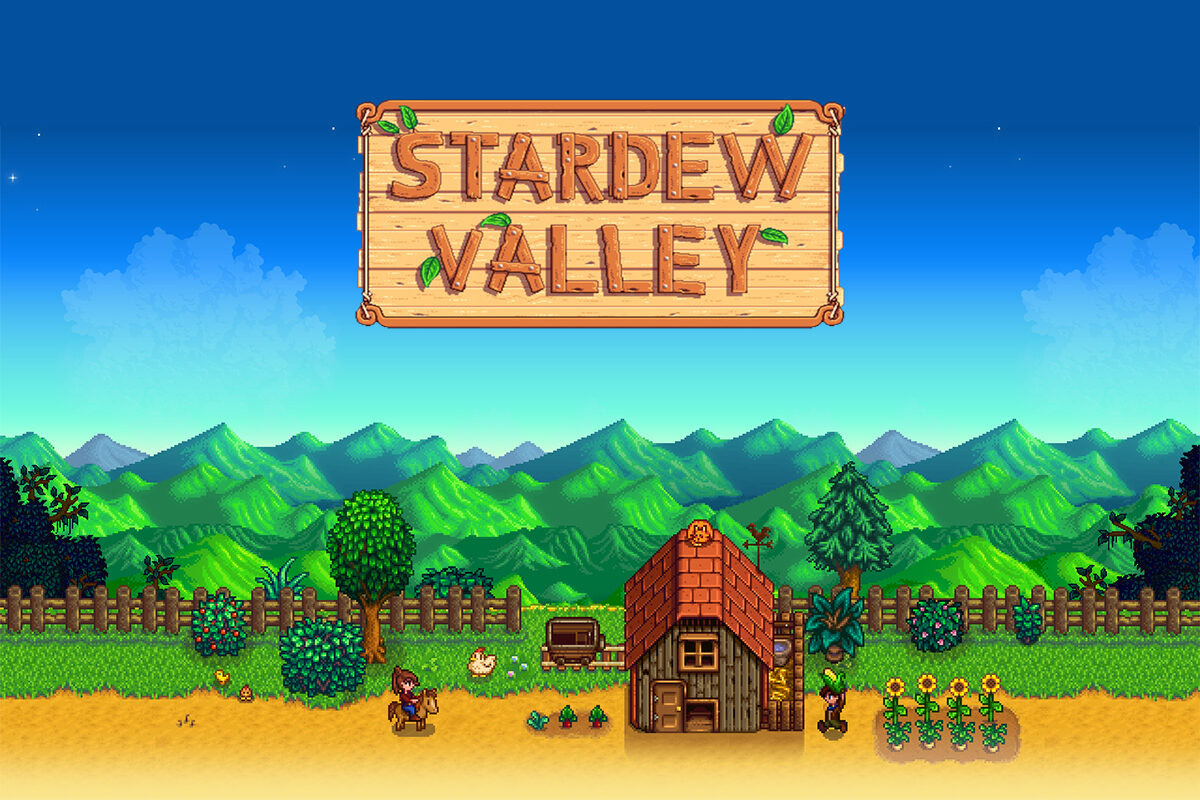
Game-Based Learning 101: How to Choose A Video Game for a HS English Class
Mindfully choosing video games to use in a classroom lends itself to meaningful play. Our six-part approach to video game selection ensures that game-based learning experiences are academically relevant and emotionally appealing to teens.
iThrive Curriculum game-based learning units are a set of social and emotional learning (SEL) curricular units for high school English Language Arts (ELA) and humanities courses that use video game narratives as core texts. In a previous post we outlined our approach to selecting games to serve as the narrative foundation for these units. In this article we'll illustrate how we applied this approach to assess the hit title, Stardew Valley, and why we ultimately decided not to pursue a Stardew Valley unit.
As we design any unit, we work closely with in-service and/or pre-service educators. In the spring semester of 2020 we worked with the students of our frequent collaborator, education and Universal Design for Learning expert, Dr. Gabrielle Rappolt-Schlichtmann of EdTogether. Her Harvard Graduate School of Education students were studying the role of emotion in learning.
We challenged Dr. Schlichtmann's students to design game-based mini-units that would embed social and emotional learning into ELA learning objectives. (This collaboration generated the core ideas for our unit, Sam's Journey, which uses the mobile game A Normal Lost Phone.)
One group of students chose to design curricular content around Stardew Valley, a hit game that's widely hailed as an emotionally touching, engrossing experience. The game is categorized as a farm-life simulator, meaning players simulate the process of maintaining a farm and building relationships with the townsfolk nearby. The game is open-ended in the sense that players have a lot of choice and agency in how to spend their in-game time and which goals to pursue. They can choose to specialize in trapping or fishing, for instance, and decide which animals to tend to on the farm, which produce to grow, and how much time to spend mining in the nearby caves. They can choose to run errands for the townspeople, and to pour effort into rebuilding the community or play a part in its eventual takeover by a soulless corporation.

A gameplay snapshot of Stardew Valley.
The draft unit that the students submitted for Stardew Valley was excellent. It was fully student-centered and focused on having students develop friendships with non-playable characters (NPCs), learning about their unique traits. The proposal was for students to tap into their empathy and perspective-taking to extend the characters' narratives through creative writing activities. These appeared to be solid angles from both an SEL and ELA point of view.
These aren't the only considerations we had to keep in mind, though. In the game, players start out as a novice farmer new to Pelican Town. They work for (in-game) days, seasons, and years to really understand what success in the game looks like and to make meaningful progress towards building relationships and contributing to the community. Members of the iThrive team have played for over 20 hours and still have a lot of work to do to get close to multiple NPCs and learn meaningful tidbits about their lives. The main drawback of Stardew Valley for our curricular approach is, ironically, the very mechanic that makes it an excellent springboard for discussions about relationship building: the time it takes.
The themes of integrating your character into the community and learning the unique traits, likes, and dislikes of your neighbors are a primary reason this game is powerful from a social and emotional learning standpoint. It just wouldn't do to rush students through the various components of the play experience just to "get to" the meaningful relationship-building moments; the drawn-out process is, in fact, the point. It takes sustained time and attention to build trust and reciprocity among community members.

A gameplay snapshot of Stardew Valley.
Another critical consideration that ultimately made us decide against pursuing a unit around Stardew Valley was a question of accessibility. The unit was designed for students to play the game alone so they could make choices that aligned with their interests and have the experience they wanted in a largely open-ended game. The game can be played on mobile phones, which is a boon to game-based learning since most teens have phones. But the game costs at least $5/license. That likely wouldn't be a barrier for a "hot seat" model of play — where students rotate playing in front of the class while peers observe — but for solo play the cost might be prohibitive for the many classrooms on tight budgets.
Here's a summary of our ultimate decision points around releasing a Stardew Valley unit:

A critical point in our decision-making process was to ask for feedback from one of our trusted teacher partners and game-based learning advocates. Our frequent collaborator, Brian Harmon, a high school ELA teacher in Georgia who uses multimedia teaching approaches, reviewed the unit proposal and noted that its biggest drawback was that "playing the game for 'hours' means we would need some formative assess[ment] component for every 15-30 minutes of gameplay. How many hours into the video game before characters are developed and how are the actual mechanics of the core gameplay addressed in the pedagogy? If the lessons are tied to the interactions only and not the gameplay then that could be a problem....The administration won't like the play, play, play, without a lot of doing (at least they won't at my school)."
All of this said, a teacher devoted to project-based, community-building efforts certainly could make Stardew Valley gameplay and discussion a recurring experiential component and discussion point of an entire semester or year-long course. But generally we have found that the more time-limited and contained gameplay experiences like those found in emotional hard-hitters including What Remains of Edith Finch and A Normal Lost Phone better deliver a feasible game-based SEL option for high school classrooms.
Are your teen students or kids already playing Stardew Valley? If so, use our game guide to connect with them about the social and emotional learning themes the video game touches upon.
Some additional questions to pose to Stardew Valley players to support critical SEL reflections:
- Among the NPCs, which ones are you drawn to and why?
- What are you noticing about your own biases and first impressions towards NPCs in the game?
- How is the culture of this community similar to or different from yours?
- How do you see your community members supporting one another in real life?
- What unique talents and points of view do/can you contribute to your community?
- How do you build relationships?


